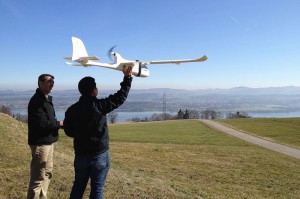
In an interview with Yale Environment 360, Koh, an associate professor at the University of Adelaide, explains how drones – also known as unmanned aerial vehicles (UAVs) – can help monitor protected areas, collect data in inaccessible regions, and even deter poachers. Although his drone research was at first “not taken very seriously,” that’s changing, he says. Koh tells e360 web editor Crystal Gammon that advances in aerial equipment and technology have made drones a key part of conservation strategies for marine reserves, rainforests, and many other landscapes, mostly in the developing world.
“In just the last couple of months,” he says, “there has been tremendous interest from universities and other research institutes that finally see the value in this technology.”
Yale Environment 360: What led you to start your organization, ConservationDrones.org?
Lian Pin Koh: The initial motivation was really about necessity. [Ecologist] Serge Wich and I – we cofounded ConservationDrones.org – have been working in southeast Asia for quite some time, and Serge has been studying orangutans in Sumatra for the last 20 years. One day westarted talking about the challenges of studying orangutans in the rainforest of Sumatra, and because I had been flying remote-controlled airplanes as a hobby, I suggested to him that we try to fly these planes with cameras attached over the forest. I thought maybe we could get good photos of the forests, and potentially even snap a few pictures of orangutans or their nests. Normally when I tell people such ideas they would not take me very seriously, but Serge was very enthusiastic – mainly because he was facing real difficulty getting funding to continue his work.
We received a small grant and started building these very low cost UAVs out of hobby-grade, remote-controlled airplanes fitted with an autopilot system. It was basically less than a thousand dollars to put this prototype together. We brought the prototype to Indonesia for its first field test, and we were very successful. We didn’t know what we were doing – we thought it would crash at some point, but it never did.
e360: Why focus on developing regions?
Koh: We understand the problems these scientists working in developing countries are facing, having worked in those areas for a long time. So we knew that, first of all, this tool would be very useful for ecologists working in those areas, and second, we knew that these scientists wouldn’t be able to afford commercially available UAV systems that cost tens of thousands or hundreds of thousands of dollars. When we realized we could build them for just a few thousand dollars, we decided that we should put this information on a webpage and share it with our colleagues in these areas.
e360: Can you talk a bit about the benefits of using drones in conservation rather than going in on foot?
Koh: In conflict zones or areas commonly visited by poachers, such as Nepal or parts of India, poachers would be armed most of the time. If conservation researchers were working in these areas they would be in constant risk of coming into contact with these people, and you never know what would happen – their lives might be at risk. By having UAVs collect the data, the biologist would avoid many of these risks.
Another reason is simply that many of these places are not accessible or would be very expensive to get to because you would need to organize a huge group of people to bring in lots of equipment, food, and other logistical needs. The drones can allow biologists to survey the area just to find out whether it’s worth investing the time and effort to organize an expedition. Of course, the drones wouldn’t be able to acquire the same amount of detailed information you would get from walking the forest on foot, but you would at least get an overview of the landscape and, in some cases, could get very high-resolution images of the forest canopy.
Continue Reading at e360.yale.edu…
Alan is serial entrepreneur, active angel investor, and a drone enthusiast. He co-founded DRONELIFE.com to address the emerging commercial market for drones and drone technology. Prior to DRONELIFE.com, Alan co-founded Where.com, ThinkingScreen Media, and Nurse.com. Recently, Alan has co-founded Crowditz.com, a leader in Equity Crowdfunding Data, Analytics, and Insights. Alan can be reached at alan(at)dronelife.com